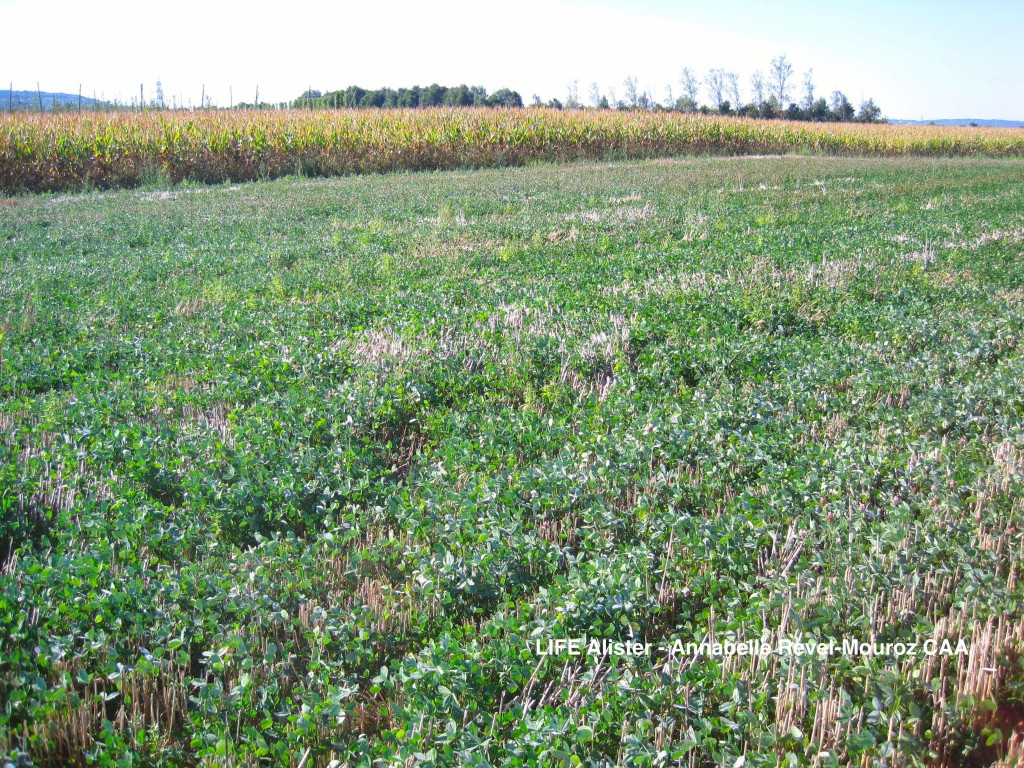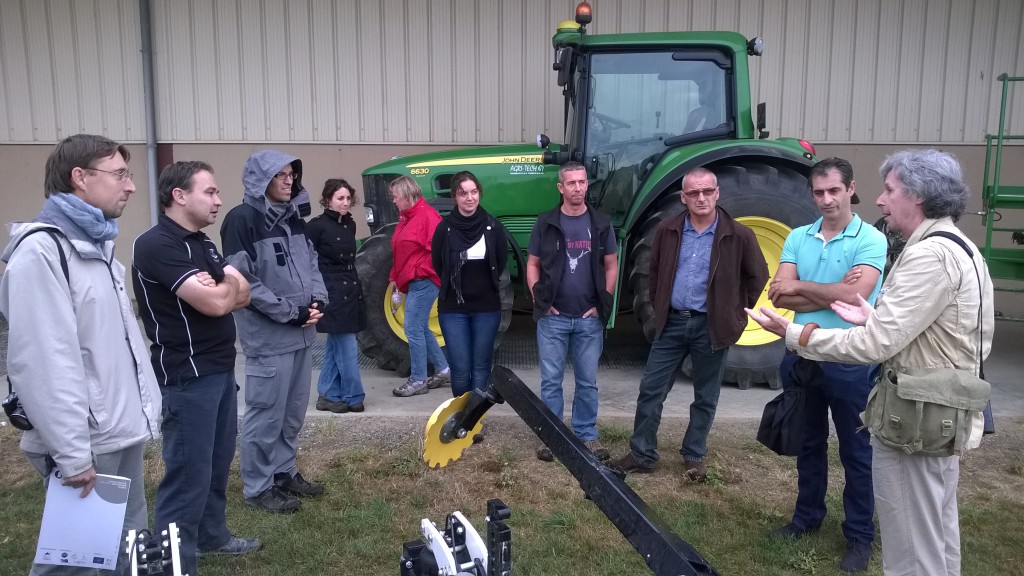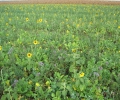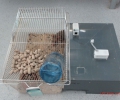The European Commission and farmers support LIFE Alister
12 octobre 2016On Friday, 16 October in the morning, representatives of the European Commission, Mrs Païva Rauma, in charge of the financial aspects and Mr Simon Goss, in charge of technical monitoring of the European Commission’s LIFE unit, (see his portrait here), came to meet farmers supporting the LIFE Alister programme.
When they went to one of the experimental parcels, they were able to appreciate how motivated the farmers were and see some of the agricultural equipment funded by the LIFE project. The technical visit, step by step.
Mr Kuntzmann’s experimental parcel
- Technical explanations of the innovative techniques tested in the LIFE Alister project
The technical itinerary* of an “innovative” wheat parcel was presented by the farmers themselves. Mr Kuntzmann father and his son are both farmers who have been involved in the LIFE Alister programme since 2015 and both spoke about the experiments they carried out on this parcel: a vegetation cover made up of a mixture of clover (crimson clover, purple clover and white clover) was sown in the spring of 2016, over the wheat which was already in place. After harvesting the wheat last July, the clover vegetation cover was able to develop quickly, thus giving European Hamsters food and protection until hibernation time would begin in autumn.
Members of the European Commission were then able to see another “innovative” parcel, cultivated by Gérard Pflger (part of the LIFE Alister programme since 2013), in which the clover vegetation cover did not develop and on which a new vegetation cover made up of a mixture of sunflower, clover, ramtil and black oats was sown just a few days after the wheat was harvested, using the 750A CUMA** de la Plaine direct seed drill.
- Presentation of the CUMA de la Plaine
The visit then took them to see Marius Rhinn, the premier Vice-President of the CUMA de la Plaine, accompanied by Thomas Blum, the President of this CUMA, with Francis Humann, the CUMA’s second President and by Laurent Fischer, the President of the AFSAL*** Association.
For Thomas Blum, the CUMA de la Plaine stems from the determination that 15 farmers share to test agricultural practices that protect European Hamsters and more generally speaking, also bring in solutions to other agricultural concerns that Alsatian farmers have (mitigating soil erosion and nitrate leaching, cutting down on chemical inputs, facilitating soil structure, etc.). The multiple profiles these farmers have (conventional farming, organic farming, those who plough, those who use TCS****) bear witness to the interest in this CUMA.
Laurent Fischer explained the commitment that farmers have in protecting European Hamsters by the progressive increase in the number of AFSAL members, just a few dozen in 2013 and currently, 150). All member farmers participate in cropping programme meetings with the goal of ensuring a minimum of 24% of crops conducive to hamsters in each ZPS***** territory.
The farmers presented the StripCat strip-till as well as the 750A direct seed drill owned by the CUMA de la Plaine, which was funded for 50% by the LIFE Alister programme. With this equipment it is no longer necessary to plough agricultural parcels, only the soil directly on the strip till line, and a vegetation cover or a crop in the stubble of the previous crop, can be directly sown.
From left to right: Philippe Osswald (CAA), Laurent Fischer (President of AFSAL), Julien Eidenschenck (ONCFS), Sarah Pinkele (Greater East), Païvi Roma (European Commission), Annabelle Revel-Mouroz (CAA), Marius Rhinn (farmer), Thomas Blum (President of the CUMA de la Plaine), Francis Humann (farmer) and Simon Goss (European Commission)
*Technical itinerary: Logical and orderly combination of techniques which allow to check the environment and to pull a given production
**CUMA: Cooperative for the Use of Agricultural Material
***AFSAL: Farmers and Wild Animals in Alsace
****TCS: Simplified Cultural Techniques
*****ZPS: Strict Protection Zone





